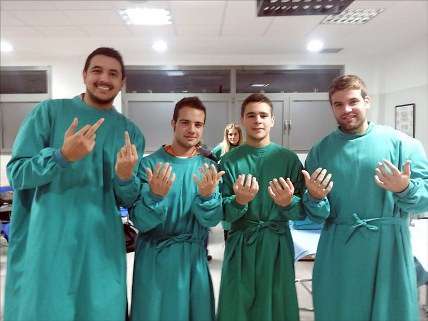If You Want More Doctors, Maybe Depending on the Feds is a Bad Idea

The fiasco at the Veterans Health Administration is only the tip of the iceberg; the United States is running out of doctors, and soon we'll all be begging for scraps of medical care, warns Marina Koren of the National Journal.
The part about the physician shortage is probably true (though it assumes that the shape of the health care industry, and who provides care, is unchangeable). But that shortage is likely inevitable in a country that has come to depend on Uncle Sugar to foot the bill for graduate medical education (GME)—residencies—which has become a bottleneck now that the federal government is broke and in a lousy position to increase spending on anything.
Writes Koren:
America is running out of doctors. The country will be 91,500 physicians short of what it needs to treat patients by 2020, according to the Association of American Medical Colleges. By 2025, it will be short 130,600.
Like at the Veterans Affairs Department, demand will be highest for primary-care physicians, the kinds of doctors many people go to first before they are referred to specialists.
While students are applying to and enrolling in medical schools in record numbers, high interest does not necessarily mean more doctors. The number of residences—crucial stages of medical training—has not risen with the number of applicants, thanks to a government-imposed cap. The Association of American Medical Colleges has pushed Congress to change the law, predicting that there won't be enough residencies for young doctors by next year.
Sure enough, the American Medical Association is waging a campaign to "SaveGME," which just means that it's lobbying for more federal bucks to subsidize residencies. As it is, the federal government places a cap on residency slots that it is willing to subsidize through Medicare and Medicaid. That's because the current process is expensive with "the public investment per physician in training comes to half a million dollars or more, according to HealthAffairs. Health insurance companies also subsidize residency slots with higher payments to teaching hospitals, but the feds are the biggest source of funding for GME.
Note that in terms of physician training, this is the chokepoint. Medical schools are opening all over the place. But medical students pay for their education, while residents are paid, so everybody wants Uncle Sugar to pick up the tab.
But what if the feds did find some loose change in the already well-probed seat cushions to expand residencies? Would that necessarily alleviate the doctor shortage?
Not so much. The shortage is in primary care. Researchers find that "despite evidence tying access to primary care physicians to improved community health outcomes and decreased costs, medical student interest in primary care and, thus, medical school output of primary care physicians, has been declining."
The researchers propose all sorts of schemes for coordinating care and cherrypicking potential students who would want to go into primary care, without asking why students might not choose to enter a field where they would seem to have guaranteed employment.
But medical students aren't idiots. The realities of primary care, according to Dr. John Schuman, are "fifteen-minute visits with patients on multiple medications, oodles of paperwork that cause office docs to run a gauntlet just to get through their day, and more documentation and regulatory burdens than ever before."
So new doctors make logical choices—many become subspecialists working for hospitals where somebody else fields the paperwork and the paychecks are regular.
We have a shortage of primary care physicians largely caused by a bankrupt government that we've become dependent on to subsidize the education of primary care physicians. There just may be a common thread here.


Show Comments (45)